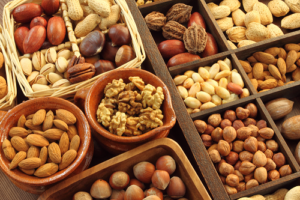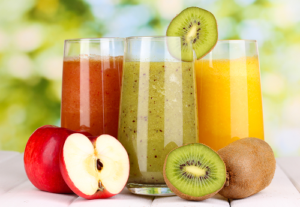 When we process nuts by grinding them to make them into nut butters, we change the way people consume and interact with them. Grinding the nuts makes it easier for people to consume them, digest the nutrient content of the nuts, and incorporate them into their daily diets.
In addition to being convenient and easy to consume, nut butters also pack a dense punch of nutrients. Nut butters are high in fiber, micronutrients, anti-inflammatory fatty acids, and omega-3 fatty acids, to name a few. They’re also excellent sources of protein, and are the perfect grab-and-go snack for people who need something healthy and filling in the middle of a busy day.
Today, the average 2-tablespoon serving of nut butter typically contains about 190 calories, 16 grams of fat, 6 grams of protein, and carbs between 0-8 grams. Whether it’s cashew butter, almond butter, or even hazelnut butter, a growing number of people enjoy these tasty treats.
When we process nuts by grinding them to make them into nut butters, we change the way people consume and interact with them. Grinding the nuts makes it easier for people to consume them, digest the nutrient content of the nuts, and incorporate them into their daily diets.
In addition to being convenient and easy to consume, nut butters also pack a dense punch of nutrients. Nut butters are high in fiber, micronutrients, anti-inflammatory fatty acids, and omega-3 fatty acids, to name a few. They’re also excellent sources of protein, and are the perfect grab-and-go snack for people who need something healthy and filling in the middle of a busy day.
Today, the average 2-tablespoon serving of nut butter typically contains about 190 calories, 16 grams of fat, 6 grams of protein, and carbs between 0-8 grams. Whether it’s cashew butter, almond butter, or even hazelnut butter, a growing number of people enjoy these tasty treats.
 Juice processing is one of the most common applications in fruit and vegetables industries. While many people imagine that juice production involves the juicing of whole food items, that’s not always the case. In fact, many whole food products must be ground or crushed before they can be juiced.
This, of course, requires the assistance of food grinding machines, specifically crushers and angle disintegrators, even for large, difficult-to-move items like apples or pineapples.
Juice processing is one of the most common applications in fruit and vegetables industries. While many people imagine that juice production involves the juicing of whole food items, that’s not always the case. In fact, many whole food products must be ground or crushed before they can be juiced.
This, of course, requires the assistance of food grinding machines, specifically crushers and angle disintegrators, even for large, difficult-to-move items like apples or pineapples.